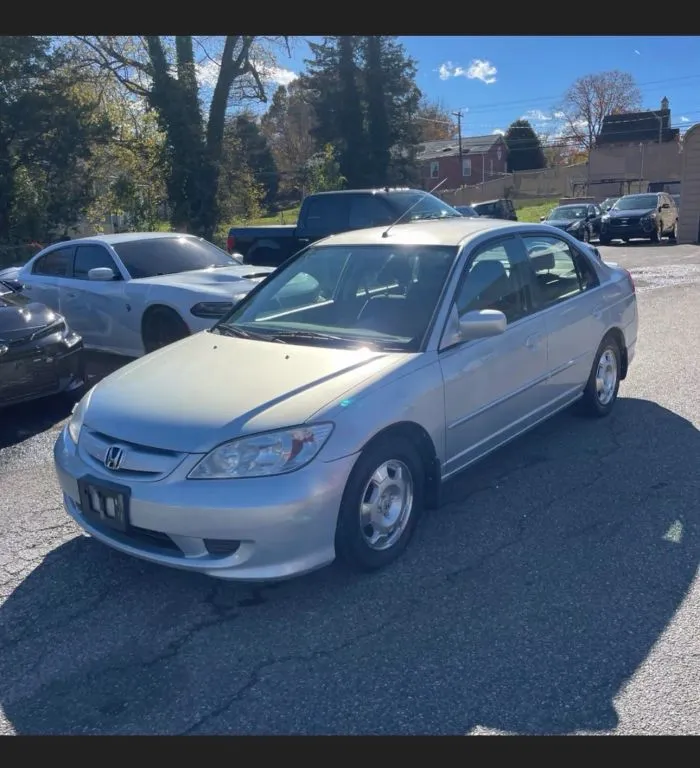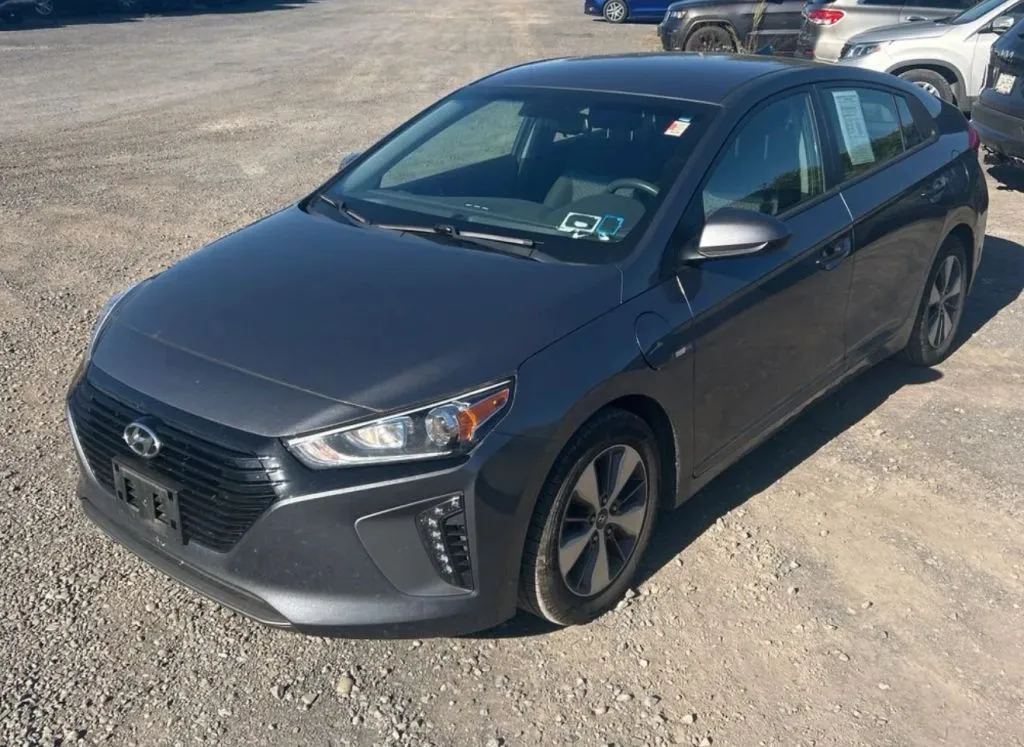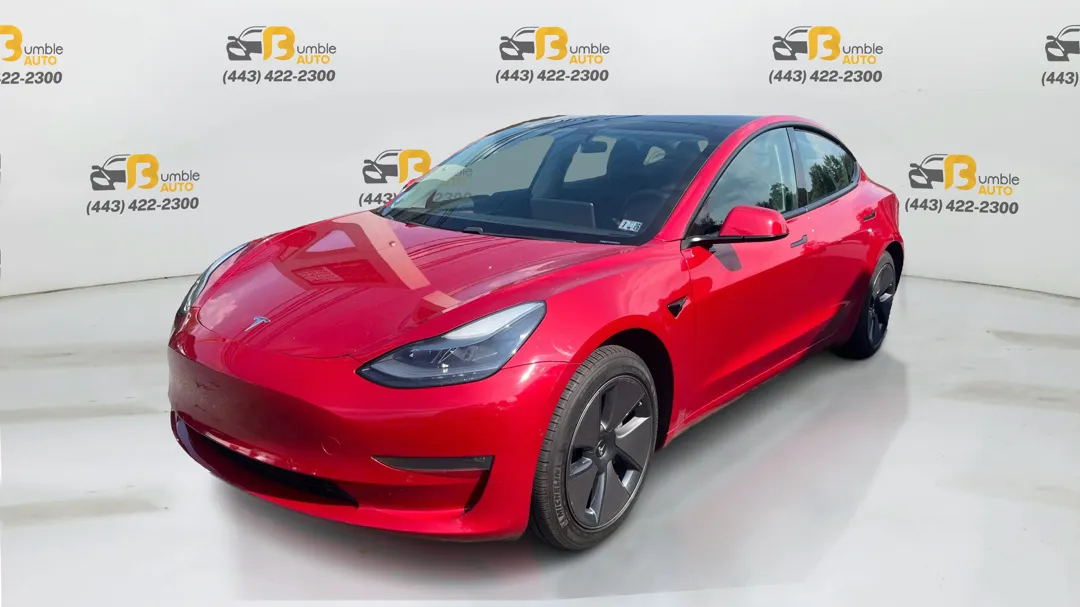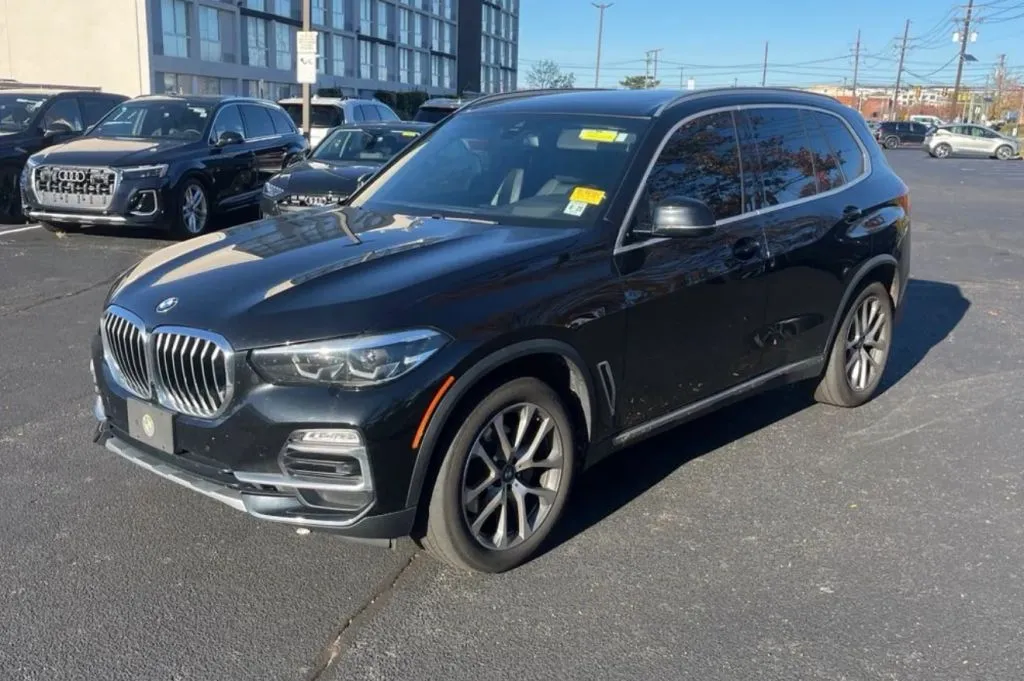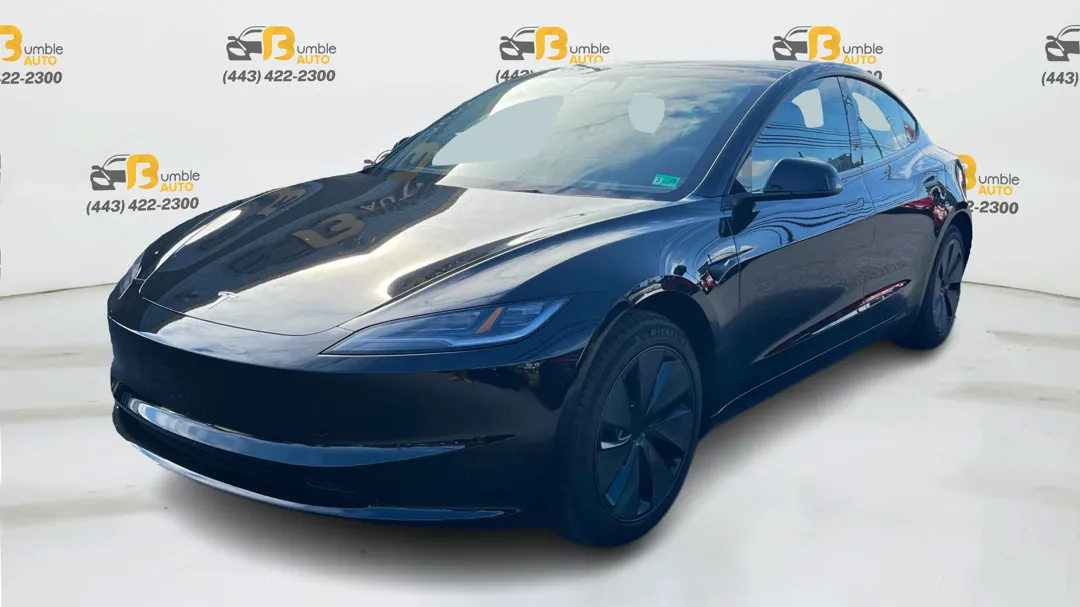Navigating the Roadblocks: How Supply Chain Issues are Shaping the Used Car Market
Table of Contents
- Understanding Supply Chain Issues in the Automotive Industry
- The Impact of Supply Chain Disruptions on New Car Production
- How Supply Chain Challenges are Affecting the Used Car Market
- Key Factors Driving Used Car Prices Upward
- 1. Limited Supply of New Vehicles
- 2. Economic Recovery and Consumer Demand
- 3. Growing Demand for Electric and Hybrid Vehicles
- The Role of Consumer Behavior in the Current Used Car Market
- The Future of the Used Car Market Post-Supply Chain Crisis
- How Dealerships are Adapting to Supply Chain Challenges
- Conclusion: Navigating the Future of the Used Car Market

The used car market is undergoing a seismic shift, and it's not just about the vehicles themselves. Supply chain issues, exacerbated by global disruptions, have created a complex web that affects everything from inventory levels to pricing dynamics. As manufacturers grapple with shortages and logistical challenges, dealerships and consumers alike are feeling the pinch. The once straightforward process of buying a pre-owned car has transformed into a landscape filled with uncertainty and strategic navigation. In this article, we’ll dive deep into the factors driving these shifts, explore how they’re reshaping buyer behavior, and provide insights for both consumers and dealers looking to adapt. Whether you're a seasoned car enthusiast or a first-time buyer, understanding these roadblocks is essential in making informed decisions in an ever-evolving market. In the 2025 used car market, buyers are encountering new pricing patterns and evolving vehicle preferences due to global disruptions. Join us as we unravel the complexities of today's used car landscape.
Understanding Supply Chain Issues in the Automotive Industry

The automotive industry has long been a well-oiled machine, with intricate networks linking manufacturers, suppliers, and dealers to ensure a steady flow of vehicles from factory floors to showrooms. However, recent global events have thrown this complex system into disarray. The COVID-19 pandemic, semiconductor shortages, and logistical bottlenecks have combined to create unprecedented supply chain disruptions. Factories were forced to halt production, shipping delays became the norm, and a ripple effect was felt across the entire automotive sector.
At the heart of these disruptions lies the semiconductor shortage, a critical issue since modern vehicles rely heavily on these tiny chips for everything from engine management to advanced driver assistance systems. The demand for semiconductors surged during the pandemic, as remote work and increased digital consumption led to higher production of electronics, leaving the automotive industry struggling to secure enough chips. This shortage has forced automakers to cut production, prioritizing certain models over others, and in some cases, leaving cars partially built until the necessary components become available.
Logistics have also played a significant role in the current supply chain crisis. With shipping routes disrupted and container shortages becoming more common, the timely delivery of parts and finished vehicles has been severely affected. Ports around the world have experienced backlogs, with ships waiting days or even weeks to unload their cargo. This congestion has further strained the supply chain, leading to delays and increased costs for manufacturers and consumers alike. The cumulative effect of these issues has been a dramatic reduction in the availability of new cars, prompting a cascade of consequences throughout the market.
The Impact of Supply Chain Disruptions on New Car Production

The direct impact of supply chain disruptions on new car production cannot be overstated. Automakers worldwide have had to make difficult decisions, including temporarily shutting down plants, delaying the launch of new models, and reallocating limited resources to their most profitable vehicles. These measures have resulted in a significant reduction in the number of new cars rolling off assembly lines, creating an inventory crunch that affects every level of the market.
For consumers, the reduced availability of new cars means longer wait times and limited choices. Popular models may be out of stock for months, and those that are available often come with higher price tags due to increased production costs and high demand. This scarcity has pushed many potential new car buyers to consider the used car market as an alternative, further straining an already tight supply.
Dealerships, too, are feeling the impact of these disruptions. With fewer new cars to sell, many are turning to the used car market to maintain their revenue streams. This shift has led to increased competition for quality pre-owned vehicles, driving up prices and making it more challenging for consumers to find affordable options. The traditional model of a dealership lot filled with new cars ready for immediate purchase has been upended, replaced by a more dynamic and uncertain landscape.
How Supply Chain Challenges are Affecting the Used Car Market

The used car market, traditionally seen as a more stable and predictable segment, has not been immune to the ripple effects of supply chain challenges. As new car production has slowed, the demand for used cars has surged, leading to significant changes in inventory levels, pricing, and consumer behavior. This shift has created a highly competitive environment where both buyers and sellers must navigate new complexities.
One of the most noticeable effects of supply chain disruptions on the used car market is the sharp increase in prices. With fewer new cars available, consumers are turning to pre-owned vehicles, driving up demand and, consequently, prices. According to industry reports, used car prices have reached record highs, with some models appreciating in value rather than depreciating. This trend has made it more difficult for budget-conscious buyers to find affordable options, and it has also changed the dynamics of financing and insurance for used cars.
Inventory levels in the used car market have also been affected. Dealers are facing challenges in acquiring quality pre-owned vehicles, as trade-ins have decreased and auctions have become more competitive. This scarcity has led to a more selective inventory, with dealerships prioritizing high-demand models and popular brands. Finding the best used car’s prices in Maryland and DC is now more competitive than ever, with buyers needing to act quickly on well-priced listings. Consumers may find that the choices available to them are more limited than in the past, prompting them to be more flexible in their preferences and willing to act quickly when a suitable vehicle becomes available.
Key Factors Driving Used Car Prices Upward

Several key factors are contributing to the continued rise in used car prices, creating a challenging market for both buyers and sellers. Understanding these drivers can help consumers make informed decisions and navigate the evolving automotive landscape more effectively.
1. Limited Supply of New Vehicles
One of the primary reasons for the spike in used car prices is the limited supply of new vehicles. Ongoing production delays, parts shortages, and global supply chain disruptions have reduced the availability of new cars. As a result, many prospective new car buyers are turning to the used car market instead, increasing demand and driving up prices. Additionally, rising production and logistics costs in the new car industry are cascading down to impact used car pricing.
2. Economic Recovery and Consumer Demand
The post-pandemic economic recovery has led to improved consumer confidence and a surge in demand for vehicles. As people return to work and daily activities, the need for personal transportation has increased. Coupled with supply constraints, this demand is pushing prices higher. Low-interest financing options and government stimulus efforts have also given consumers more spending power, intensifying the competition for used cars.
3. Growing Demand for Electric and Hybrid Vehicles
The rising interest in sustainability and cleaner transportation is also affecting the used car market, particularly for electric vehicles (EVs) and hybrids. While new EV production is scaling up, the availability of used models remains limited. The growing trend for EVs is putting pressure on both supply and pricing in the secondhand vehicle space. This scarcity, combined with increasing demand, is boosting prices for pre-owned EVs. Moreover, the rising cost of raw materials like lithium and cobalt—crucial for EV batteries—is further contributing to the upward trend in pricing.
The Role of Consumer Behavior in the Current Used Car Market

Consumer behavior has always been a driving force in the automotive market, and the current landscape is no exception. The shifts in consumer preferences and purchasing habits, influenced by the supply chain challenges and broader economic factors, are playing a crucial role in shaping the used car market.
One significant change in consumer behavior is the increased willingness to consider used cars over new ones. Traditionally, many buyers preferred new vehicles for their reliability, warranties, and the latest features. However, with the current scarcity and high prices of new cars, consumers are more open to exploring the used car market. This shift has led to a broader acceptance of pre-owned vehicles and a greater emphasis on factors such as vehicle history, condition, and mileage.
Another notable trend is the rising importance of online car shopping and digital transactions. The pandemic accelerated the adoption of online platforms for car purchases, and this trend has continued as consumers seek convenience and safety. Virtual showrooms, online financing options, and home delivery services have become more prevalent, allowing buyers to shop for used cars from the comfort of their homes. This digital shift has also increased the transparency of the market, as consumers have access to a wealth of information and reviews to make informed decisions.
Additionally, consumers are becoming more strategic in their approach to buying used cars. With prices at record highs and inventory levels fluctuating, buyers are doing more research, comparing prices across different sources, and being more patient in their search for the right vehicle. Some are even considering alternative options, such as leasing or car subscription services, to navigate the current market conditions. Consumers researching tips for successful used car buying are better positioned to avoid common pitfalls in a high-demand, low-inventory market. This strategic behavior highlights the adaptability of consumers in response to the evolving challenges of the used car market.
The Future of the Used Car Market Post-Supply Chain Crisis

As the world slowly recovers from the supply chain crisis, the used car market is likely to undergo further changes and adjustments. While some of the current challenges may ease, new trends and dynamics are expected to shape the future of the market. Understanding these potential developments can help consumers and dealers prepare for what lies ahead.
One possible scenario is a gradual normalization of supply and demand. As production of new cars ramps up and supply chain issues are resolved, the pressure on the used car market may decrease. This could lead to a stabilization of prices and a more balanced inventory. However, it's important to note that the effects of the crisis may linger for some time, and the market may not return to pre-crisis conditions immediately. Consumers should remain vigilant and continue to monitor market trends to make informed decisions.
Another trend to watch is the increasing popularity of electric vehicles and hybrids in the used car market. As new EVs become more widely available and affordable, the supply of used EVs is expected to grow. This shift towards greener vehicles will likely influence consumer preferences and demand, leading to new opportunities and challenges in the market. Japanese automakers are expected to scale EV offerings as Japanese cars in the auto market gain more attention among economy-seeking buyers. Dealers and consumers alike should stay informed about advancements in EV technology and the availability of pre-owned models to capitalize on this emerging trend.
The ongoing digital transformation of the automotive market is expected to continue. Online platforms, virtual showrooms, and digital transactions have become integral to the car-buying process, and their importance is likely to increase. This shift will further enhance transparency, convenience, and accessibility for consumers, while also presenting new opportunities for dealers to reach a broader audience. Embracing these digital tools and staying ahead of technological advancements will be key to navigating the future of the used car market.
How Dealerships are Adapting to Supply Chain Challenges

Dealerships have faced significant challenges in the wake of supply chain disruptions, but many have demonstrated remarkable adaptability and resilience. By implementing new strategies and leveraging technology, dealerships are finding ways to navigate the current landscape and continue serving their customers effectively.
One key adaptation has been the diversification of inventory sources. With traditional supply channels constrained, dealerships are exploring alternative avenues to acquire quality used cars. This includes participating in online auctions, purchasing vehicles directly from consumers through trade-in and buy-back programs, and forming partnerships with rental car companies and fleet operators. By expanding their sourcing options, dealerships can maintain a more robust and diverse inventory, meeting the needs of a wider range of customers.
Another significant change has been the adoption of digital tools and online sales platforms. The pandemic accelerated the shift towards online car shopping, and dealerships have responded by enhancing their digital presence. Virtual showrooms, video walkarounds, and online financing applications have become standard offerings, allowing customers to complete much of the car-buying process remotely. This digital transformation has not only increased convenience for consumers but also enabled dealerships to reach a broader audience and streamline their operations.
Dealerships are also placing a greater emphasis on customer service and transparency. In a market characterized by high prices and limited inventory, building trust and providing a positive customer experience is more important than ever. This includes offering detailed vehicle histories, transparent pricing, and comprehensive after-sales support. Bumble Auto, your local used car dealership, has embraced digital transformation and diversified sourcing to meet modern buyer expectations. By prioritizing customer satisfaction and fostering long-term relationships, dealerships can differentiate themselves in a competitive market and build loyalty among buyers.
Conclusion: Navigating the Future of the Used Car Market
The used car market is in the midst of a transformative period, shaped by supply chain disruptions, changing consumer behavior, and evolving industry dynamics. Navigating this landscape requires a deep understanding of the factors driving these changes and a strategic approach to buying and selling vehicles. For consumers, this means being proactive, flexible, and well-informed. For dealerships, it involves adapting to new challenges, leveraging technology, and prioritizing transparency and customer service.
As the world recovers from the current crisis, the used car market will continue to evolve. The normalization of supply and demand, the growing popularity of electric vehicles, and the ongoing digital transformation will all play a role in shaping the future. By staying attentive to these trends and developments, both consumers and dealers can position themselves for success in an ever-changing market.
Ultimately, the key to navigating the future of the used car market lies in adaptability and resilience. Whether you're a seasoned car enthusiast or a first-time buyer, understanding the complexities of today's landscape is essential in making informed decisions. By embracing new strategies and staying informed about market trends, you can confidently navigate the roadblocks and find the right vehicle to meet your needs.
The journey may be challenging, but with the right knowledge and approach, the rewards can be significant. The used car market remains a vital and dynamic part of the automotive industry, offering opportunities for both buyers and sellers to thrive. As we move forward, the lessons learned from this period of disruption will shape a more resilient and innovative market, ready to meet the demands of the future.


